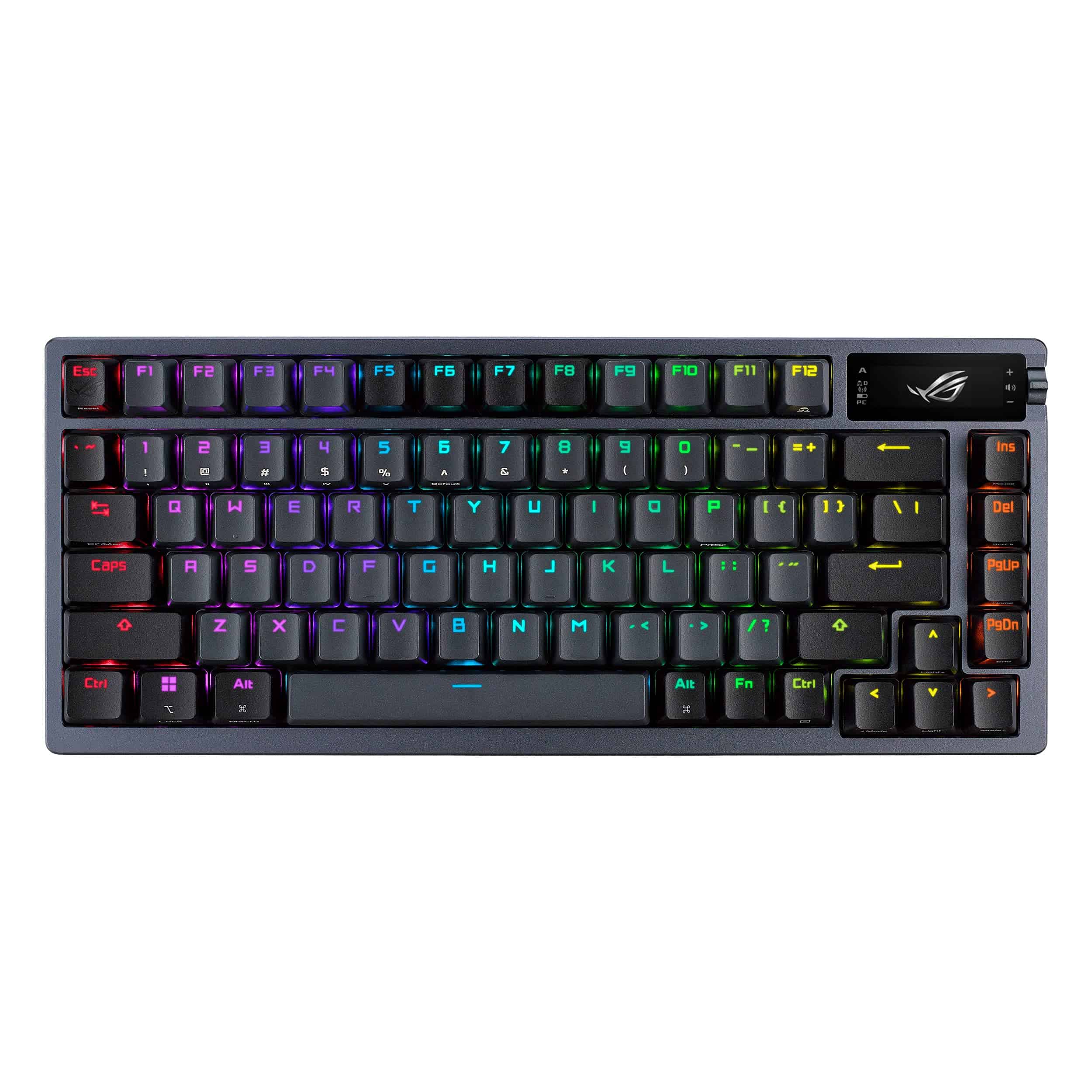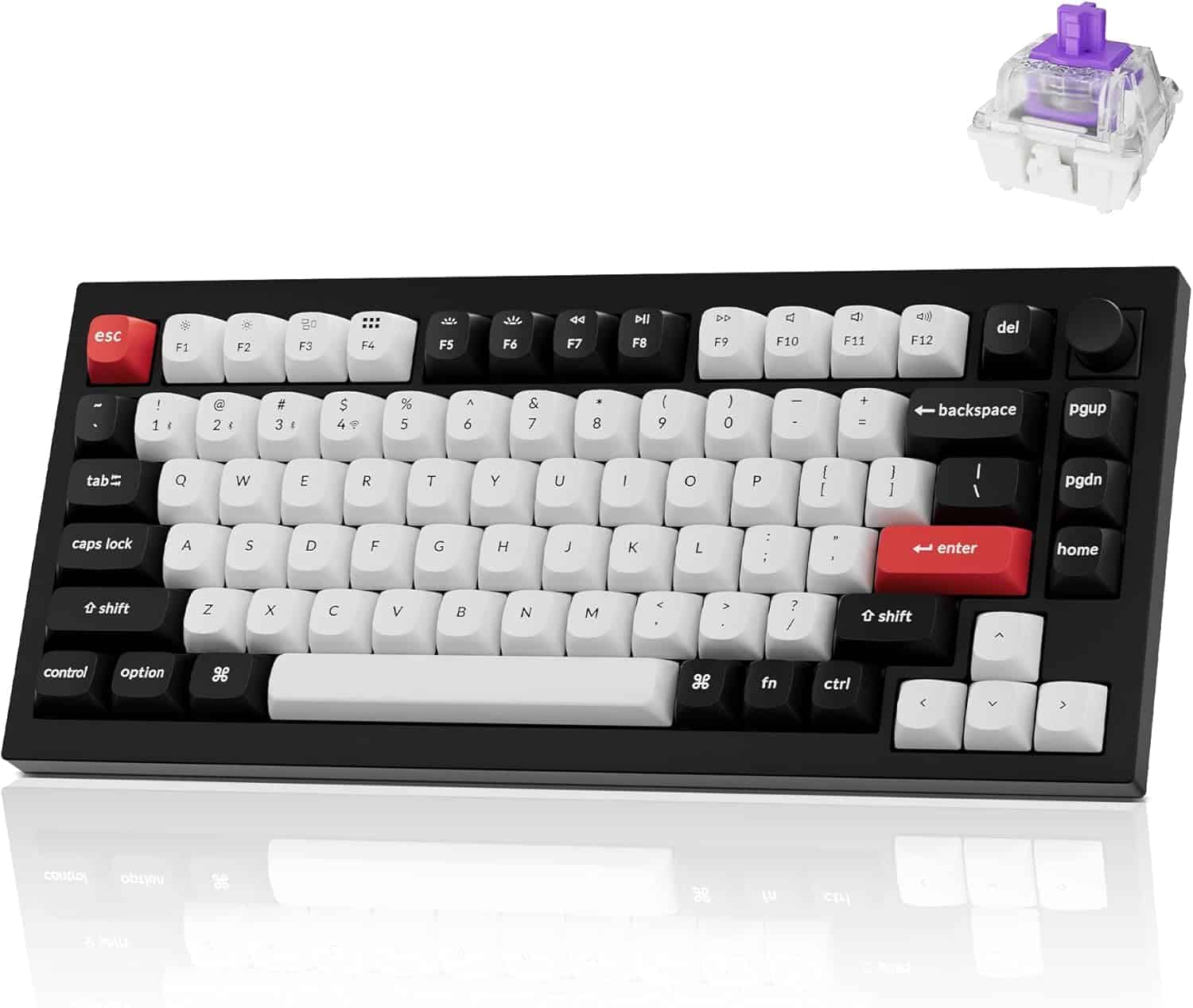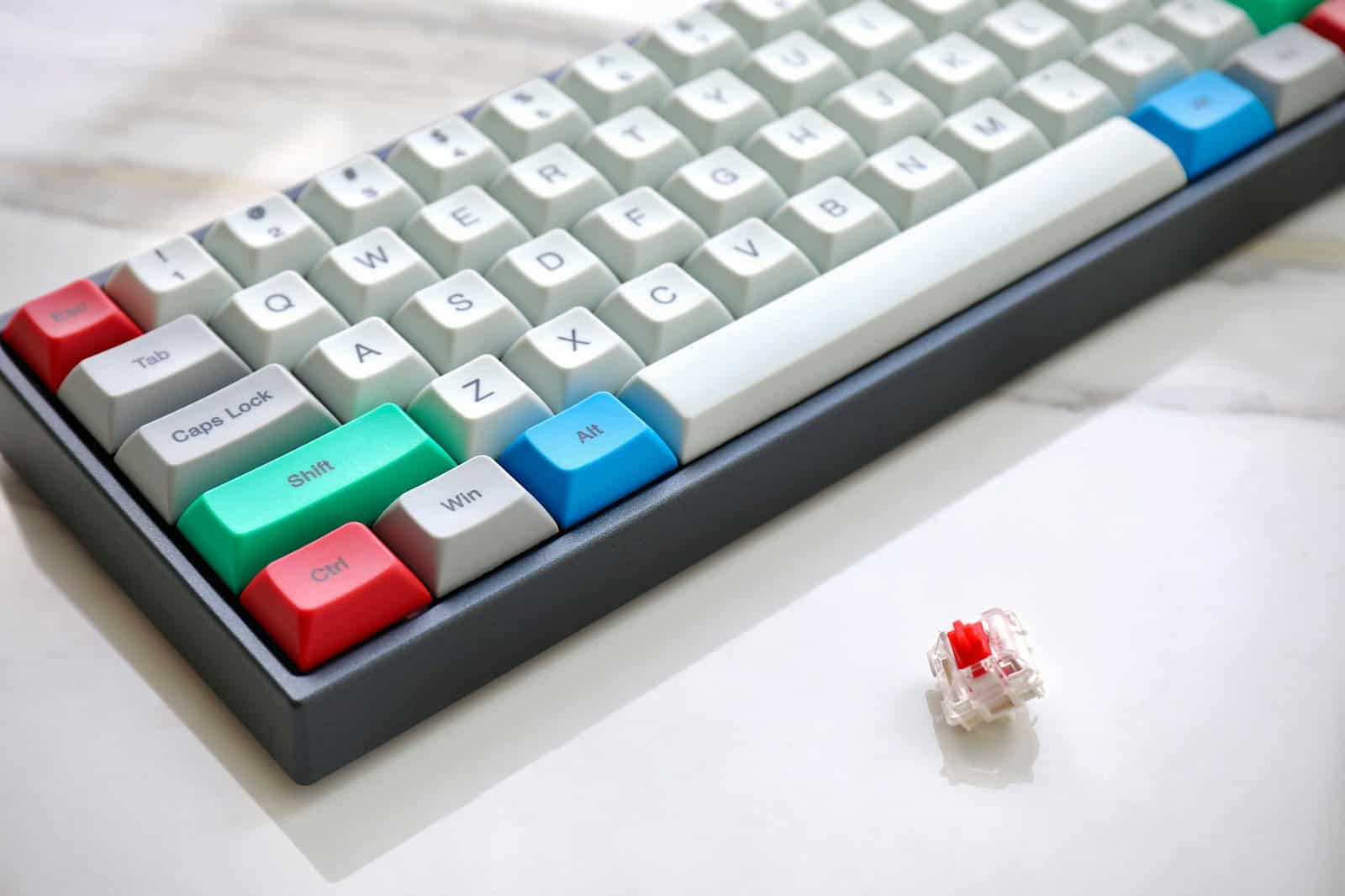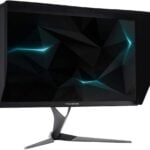The wireless mechanical keyboard market has evolved rapidly, combining tactile satisfaction with the convenience of cord-free setups. Whether you’re a gamer, coder, creative professional, or productivity power user, 2025’s top wireless mechanical keyboards deliver the responsiveness, customization, and durability once limited to wired setups — with zero compromises.
From low-latency 2.4GHz connections to robust Bluetooth multipoint pairing, the best options today rival their wired counterparts in every category. Beyond just ditching the cable, these keyboards bring hot-swappable switches, aluminum frames, analog input, and even magnetic actuation into play. Here’s a ranked and curated list of the top wireless mechanical keyboards you should consider this year.
1. Asus ROG Azoth

Amazon Link: https://amzn.to/4iUJEVJ
Best Overall Wireless Mechanical Keyboard
The ROG Azoth is a standout with its 75% layout, gasket-mounted design, hot-swappable switches, and a 2,000+ hour battery life when RGB is disabled. What really sets it apart is the built-in OLED display for system monitoring or personalization, and tri-mode connectivity (Bluetooth, 2.4GHz, USB-C). This board has become the gold standard for gamers and productivity enthusiasts alike.
Key Features:
- ROG NX switches (hot-swappable)
- Tri-mode connection with low-latency 2.4GHz
- OLED display and metal construction
- Included lube kit for custom tuning
2. Keychron Q1 HE

Amazon Link: https://amzn.to/42i5BXI
Best for Customization & Mac Compatibility
Keychron raised the bar with the Q1 HE — a wireless version of its premium Q1. This keyboard features Hall-effect magnetic switches that allow adjustable actuation points and rapid trigger detection, ideal for gamers and typists who value precision. Plus, it’s fully compatible with macOS and Windows, and even supports VIA/QMK for advanced remapping.
Key Features:
- Magnetic Hall-effect switches with analog input
- Hot-swappable PCB
- Wireless + Wired (Bluetooth and USB-C)
- Machined aluminum body
3. Logitech G915 Lightspeed
Best Low-Profile Option
This slim, premium keyboard is a gamer’s dream with its ultra-responsive Lightspeed wireless tech, GL low-profile mechanical switches (available in Tactile, Clicky, or Linear), and full RGB backlighting. It’s remarkably thin without sacrificing performance and offers dedicated macro keys for streamers or MMO players.
Key Features:
- Low-profile GL mechanical switches
- Lightspeed 2.4GHz wireless + Bluetooth
- Aircraft-grade aluminum frame
- 30+ hour battery life with full lighting
4. Razer Pro Type Ultra
Best for Productivity and Office Use
Designed for the modern professional, the Pro Type Ultra combines silent Razer Yellow switches with a plush wrist rest and multi-device pairing. Its subdued white aesthetic fits perfectly into any office setup, and it offers a quiet but satisfying typing experience — rare for mechanical keyboards.
Key Features:
- Razer Yellow linear switches
- Silent operation and ergonomic wrist rest
- Connect up to 4 devices
- Fully programmable keys
5. Corsair K70 Pro Mini Wireless
Best Compact Keyboard for Gamers
Corsair took its iconic K70 series and packed it into a 60% form factor with wireless functionality. With AXON Hyper-Processing technology offering 8,000Hz polling over USB and ultra-low latency 2.4GHz wireless, this is the compact board to beat for competitive gamers.
Key Features:
- Cherry MX hot-swappable switches
- Per-key RGB with iCUE support
- Up to 32 hours with RGB, 200+ hours without
- Detachable USB-C cable
6. SteelSeries Apex Pro Mini Wireless
Best for Adjustable Actuation
What makes the Apex Pro Mini Wireless special is its OmniPoint 2.0 adjustable switches, which allow you to set the actuation point per key — from feather-light to deep press. This feature makes it incredibly flexible for both gaming and typing. It also supports dual actuation on a single keystroke, giving you macro-like behavior in games.
Key Features:
- Adjustable actuation (0.2mm–3.8mm)
- Dual wireless (Bluetooth + 2.4GHz)
- Compact 60% design
- SteelSeries Engine software integration
7. Lemokey P1 HE
Best Value Hall-Effect Option
From the creators of Keychron, Lemokey offers a surprisingly affordable 75% keyboard with magnetic switches and analog input. The P1 HE includes tri-mode connectivity, customizable actuation, and smooth factory lubed switches — ideal for those seeking cutting-edge tech on a budget.
Key Features:
- Hall-effect analog switches
- Bluetooth, 2.4GHz, USB-C
- VIA support
- Excellent build quality at a mid-range price
8. Logitech G715
Best Wireless TKL for Style & Performance
Part of Logitech’s Aurora collection, the G715 blends aesthetics and performance in a tenkeyless form factor. With GX mechanical switches, cloud-shaped wrist rest, and Lightsync RGB, it’s a fan favorite among streamers and casual gamers.
Key Features:
- GX tactile switches
- Customizable RGB and white chassis
- Compact and travel-friendly
- Wireless + USB-C wired
9. Asus ROG Falchion RX Low Profile
Best Low-Profile 65% Keyboard
A lesser-known gem, the Falchion RX LP packs an impressive feature set into a small footprint: linear optical switches, an interactive touch bar, and rock-solid 2.4GHz performance. It’s also surprisingly quiet and ideal for LAN setups.
Key Features:
- ROG RX Low-Profile switches
- Interactive touch panel
- 65% layout with arrow keys
- Up to 430-hour battery life (no RGB)
10. Razer BlackWidow V4 75%
Best RGB Experience with Hot-Swap Support
The V4 75% takes Razer’s gaming legacy and adds enthusiast-level features like hot-swappable switches and per-key RGB. It’s geared toward those who love to customize without sacrificing gaming-grade performance.
Key Features:
- Razer Orange tactile or Yellow linear switches
- Per-key RGB with Chroma
- Gasket-mounted for softer typing
- Detachable wrist rest
How to Choose the Right Wireless Mechanical Keyboard
When shopping, consider:
- Layout: Full-size, TKL, 75%, 65%, or 60% depending on desk space and needs.
- Switch type: Linear (smooth), Tactile (bump), or Clicky (audible feedback).
- Connectivity: Dual or tri-mode (Bluetooth + 2.4GHz + Wired) is ideal.
- Battery Life: Can range from 30 hours with RGB on to 2,000+ hours with it off.
- Hot-swappability: Swap switches without soldering for easy customization.
Wireless mechanical keyboards have come a long way from laggy, niche gadgets. In 2025, they’re as fast and feature-rich as wired models — with the added bonus of clean setups, portability, and versatility across devices. Whether you’re a hardcore gamer or an office pro, there’s never been a better time to go wireless.
Key Takeaways
- Wireless mechanical keyboards now offer the same typing quality as wired models with added flexibility and reduced desk clutter.
- Top models from brands like Keychron, Razer, and NuPhy provide options across price ranges for both productivity and gaming needs.
- Look for dual connectivity (Bluetooth and 2.4GHz), long battery life, and your preferred switch type when selecting the best wireless mechanical keyboard.
Fundamentals of Wireless Mechanical Keyboards
Wireless mechanical keyboards blend the tactile satisfaction of mechanical switches with the freedom of cordless connectivity. These devices have become increasingly popular among enthusiasts who value both performance and workspace flexibility.
Understanding Wireless Connectivity
Wireless keyboards typically connect through one of two primary methods: Bluetooth or RF (Radio Frequency) with a USB dongle. Bluetooth connectivity allows users to pair their keyboard directly with multiple devices without additional hardware, making it ideal for switching between computers, tablets, and phones.
RF connections use a dedicated 2.4GHz wireless receiver that plugs into a USB port. This technology typically provides lower latency than Bluetooth, making it preferred for gaming and fast-paced tasks where every millisecond counts.
Battery life is a crucial consideration for wireless keyboards. Most modern models offer impressive longevity, ranging from several weeks to months on a single charge. Many high-end options like the Logitech G915 include rechargeable batteries with power-saving features.
Connection stability varies between models. Premium keyboards like the Keychron V series and NuPhy Air75 V2 maintain reliable connections with minimal interference or dropouts.
Mechanical vs Membrane Keyboards
Mechanical keyboards use individual switches under each key, while membrane keyboards utilize pressure pads. This fundamental difference creates distinct typing experiences and performance characteristics.
Mechanical switches provide tactile feedback and audible clicks that many users find satisfying. They require a specific amount of force (actuation force) to register keystrokes, which can reduce typing errors and finger fatigue.
Switch types vary significantly, offering different experiences: linear switches (smooth keystrokes), tactile switches (bump feedback without loud clicks), and clicky switches (both tactile bump and audible click). Popular switch manufacturers include Cherry, Gateron, and Kailh.
The durability of mechanical switches is substantially higher than membrane keyboards, typically lasting for 50-100 million keystrokes versus 5-10 million for membrane keyboards. This longevity makes mechanical keyboards a worthwhile investment despite their higher initial cost.
Wireless mechanical keyboards might feel slightly heavier than their wired counterparts due to battery components, but manufacturers like NuPhy and Keychron have managed to create portable options without sacrificing build quality.
Key Features and Design Elements
When selecting a wireless mechanical keyboard, several design elements and features will impact your typing experience. The right combination of switches, keycaps, and form factor creates a keyboard that matches your specific needs.
Switch Types and Actuation
Mechanical keyboards are defined by their switches, which come in three main types: linear, tactile, and clicky. Linear switches (like Cherry MX Red) provide smooth keystrokes without tactile bumps, making them popular for gaming. Tactile switches (such as Cherry MX Brown) offer a noticeable bump during keystrokes without loud clicking sounds, providing feedback without noise.
Clicky switches (like Cherry MX Blue) deliver both tactile feedback and an audible click, satisfying for typing but potentially disruptive in quiet environments.
Switch actuation force—measured in grams—determines how much pressure is needed to register a keystroke. Lighter switches (45g) require less force and can reduce finger fatigue during long typing sessions, while heavier switches (60g+) help prevent accidental keypresses.
Many premium wireless keyboards now feature hot-swappable switches, allowing users to change switch types without soldering.
Keycap Material and Durability
Keycaps significantly impact both aesthetics and typing experience. PBT (Polybutylene Terephthalate) keycaps have become increasingly popular due to their durability and resistance to shine. Unlike ABS plastic, PBT keycaps don’t develop a glossy surface after extended use.
Double-shot keycaps feature legends (characters) molded from a separate piece of plastic, ensuring the letters never fade. This construction is especially valuable for backlit keyboards.
Keycap profile affects typing comfort and sound. Common profiles include:
- OEM: Standard height with slightly curved tops
- Cherry: Lower and flatter than OEM
- DSA: Uniform height with spherical tops
- SA: Tall with spherical tops
Many wireless mechanical keyboards feature stabilizers under larger keys like the spacebar and shift keys. Quality stabilizers prevent key wobble and reduce rattling sounds during typing.
Form Factors and Keyboard Sizes
Wireless mechanical keyboards come in several sizes to suit different needs and workspaces:
Full-size (100%) includes all standard keys including the numpad, function row, and navigation cluster. These provide complete functionality but take up more desk space.
TKL (Tenkeyless, 80%) removes the numpad while retaining all other keys. This popular compromise saves space while keeping most functionality.
75% keyboards compress the navigation cluster next to the main keys, offering nearly the same functionality as TKL in a smaller footprint.
65% designs eliminate the function row but keep arrow keys and some navigation buttons. These compact options balance functionality with portability.
60% keyboards strip down to just the essential alphanumeric keys and modifiers, accessing other functions through key combinations. They’re highly portable but require learning new key shortcuts.
Low-profile keyboards with shorter switches and keycaps are gaining popularity for their laptop-like typing experience and modern aesthetic.
Performance and User Experience
Wireless mechanical keyboards offer unique performance benefits that impact both typing and gaming experiences. The quality of switches, response time, and ergonomic design all contribute to how these keyboards perform in daily use.
Gaming Performance and Macros
Wireless mechanical keyboards have evolved significantly for gamers. Many models now feature 2.4GHz wireless connections that deliver near-zero latency, comparable to wired alternatives. The Razer BlackWidow V3 Pro stands out with full-size mechanical switches that gamers prefer for consistent actuation.
Linear switches like Cherry MX Reds or Gateron Reds are popular among gamers for their smooth keypresses without tactile bumps. These switches allow for faster repeated presses during intense gaming sessions.
Most gaming-focused wireless keyboards include:
- Programmable macro keys
- N-key rollover for simultaneous keypresses
- RGB lighting with customizable profiles
- 1000Hz polling rates for responsive inputs
Battery life remains crucial for gaming performance. Top models like the Keychron V3 Max balance power consumption with performance features, offering 30+ hours of use with backlighting enabled.
Typing Comfort and Ergonomics
The typing experience on wireless mechanical keyboards varies significantly based on switch type. Tactile switches like Cherry MX Browns provide feedback without excessive noise, making them ideal for office environments. Clicky switches offer audible confirmation but may disturb others nearby.
Keycap quality affects comfort during extended typing sessions. PBT keycaps resist shine and offer a textured surface that many users prefer over standard ABS plastic.
The NuPhy Air75 V2 exemplifies good ergonomics with its low-profile design, reducing wrist strain during long typing sessions. Its portability doesn’t compromise the typing experience.
Key factors affecting typing comfort include:
- Switch actuation force (45-60g is common)
- Key travel distance (3-4mm for full-height switches)
- Keyboard angle and height adjustability
- Wrist rest compatibility
Many models like the Logitech MX Keys S now incorporate ergonomic features while maintaining the mechanical feel users prefer for daily productivity.
Top Picks and Recommendations
Based on expert reviews and user feedback, several wireless mechanical keyboards stand out for their performance, build quality, and features. These top models offer different sizes and connectivity options to suit various needs.
Leading Models and Brands
Razer dominates the wireless mechanical keyboard market with several standout products. The Razer Pro Type Ultra is widely recommended as the best overall wireless keyboard for most users, offering versatility and comfort for everyday typing. For gaming enthusiasts, the Razer BlackWidow V3 Pro provides a full-size layout with mechanical switches that deliver excellent feedback.
Keychron also produces exceptional wireless options. The Keychron V3 Max, V5 Max, and V6 Max have received positive reviews for their build quality and typing experience. The Keychron K2 features a space-saving 75% layout and uses Bluetooth 5.1 technology for improved connectivity.
For those seeking a premium gaming experience, the Alienware Pro Wireless Gaming Keyboard includes rapid trigger technology that registers keystrokes faster than traditional switches.
Comparison of Top Wireless Mechanical Keyboards
| Model | Type | Connectivity | Best For | Notable Features |
|---|---|---|---|---|
| Razer Pro Type Ultra | Full-size | 2.4GHz/Bluetooth | Professional use | Comfortable wrist rest, quiet switches |
| Razer BlackWidow V3 Pro | Full-size | 2.4GHz/Bluetooth | Gaming | RGB lighting, premium build quality |
| Keychron V3 Max | Tenkeyless (TKL) | Bluetooth/USB-C | Versatile use | Hot-swappable switches, compact design |
| Keychron K2 | 75% | Bluetooth 5.1 | Portable use | Mac/Windows compatibility, good battery life |
| Alienware Pro | Full-size | 2.4GHz | Gaming | Rapid trigger technology, low latency |
The best wireless mechanical keyboard depends on specific needs. Gamers should prioritize 2.4GHz connectivity for lower latency, while office users might prefer quieter switches and ergonomic features.
Battery life ranges from 25-200 hours depending on backlight usage. Most premium models offer both Bluetooth and 2.4GHz wireless options for flexibility.
Frequently Asked Questions
Wireless mechanical keyboards offer a range of features and benefits that cater to different user needs. Here are answers to some common questions that may help you find the perfect keyboard for your specific requirements.
What are the top-rated wireless mechanical keyboards for professional use?
The Logitech Pop Icon Keys is widely recognized as one of the best wireless keyboards for professional use. It combines reliability with comfortable typing for extended work sessions.
The Razer Pro Type Ultra also stands out as a versatile option for professionals. It provides a premium typing experience with quiet mechanical switches that won’t disturb colleagues in an office environment.
For those who prefer a more premium option, the Keychron K series offers professional-grade build quality with customizable features that suit various work environments.
Which wireless mechanical keyboards offer the best performance for gaming?
Wireless mechanical keyboards have become increasingly reliable for gaming. Models with low latency connections and fast response times provide performance comparable to wired options.
The Razer BlackWidow V3 Pro features gaming-optimized switches with quick actuation points and Bluetooth/2.4GHz connectivity options for minimal input lag.
Logitech’s G915 TKL is another top gaming performer with ultra-low profile mechanical switches and reliable wireless technology that gamers trust during competitive play.
How do battery life and connectivity options compare among the leading wireless mechanical keyboards?
Battery life varies significantly between models, ranging from days to months depending on usage and lighting features. Keyboards with RGB lighting typically require more frequent charging than those without.
Most premium wireless keyboards offer dual connectivity options: Bluetooth for convenience and 2.4GHz wireless for lower latency. The Razer Pro Type Ultra exemplifies this with both connection types.
Some keyboards like the Keychron models feature large batteries that can last weeks on a single charge, even with backlighting enabled at moderate brightness levels.
Which wireless mechanical keyboard models provide the best typing experience?
The typing experience largely depends on switch type preferences. Cherry MX Browns offer a balanced tactile feedback many typists enjoy, while Blues provide satisfying clicks.
Keychron keyboards are known for their comfortable typing experience with a variety of switch options to suit different preferences.
The Logitech Pop Icon Keys delivers a satisfying typing feel with good key travel and spacing, making it comfortable for extended typing sessions.
What are the most recommended wireless mechanical keyboards by professional users on forums?
The Keychron K series frequently appears in recommendations on keyboard enthusiast forums. Users praise its build quality, switch options, and value.
Razer’s Pro Type Ultra receives positive mentions for professional environments where both performance and aesthetics matter.
Many forum users also recommend the Logitech MX Mechanical for its reliability and software features that enhance productivity across different applications.
Are there any wireless mechanical keyboards that combine both aesthetics and functionality?
The Logitech MX Mechanical Mini balances clean design aesthetics with highly functional features. Its minimalist appearance fits well in professional settings while offering excellent typing performance.
Keyboards from Ducky and Varmilo offer beautiful keycap designs and color schemes while maintaining high-quality mechanical performance and wireless functionality.
The NuPhy Air75 features an ultra-slim profile with eye-catching design elements. It combines visual appeal with practical features like multi-device pairing and comfortable low-profile mechanical switches.







